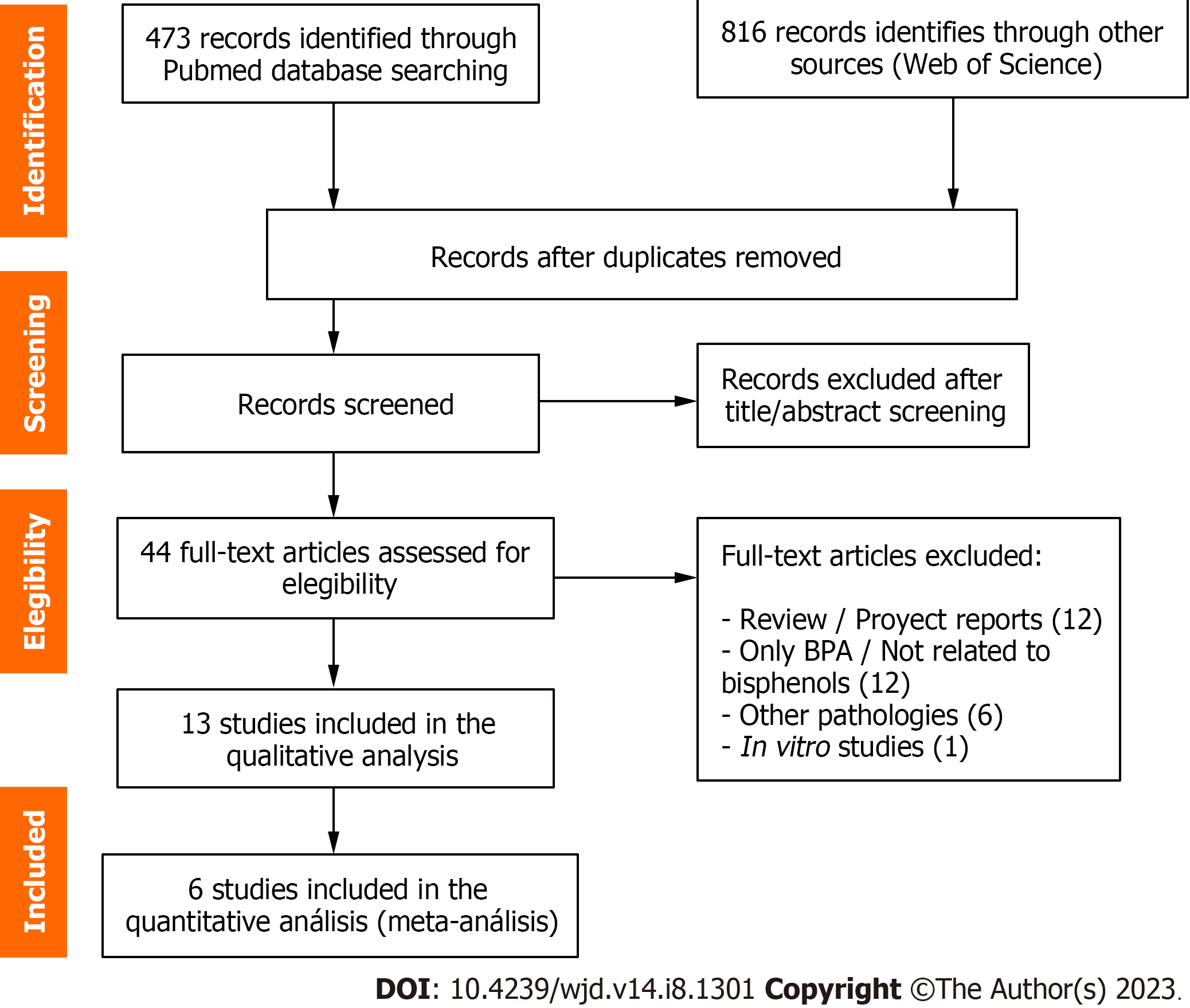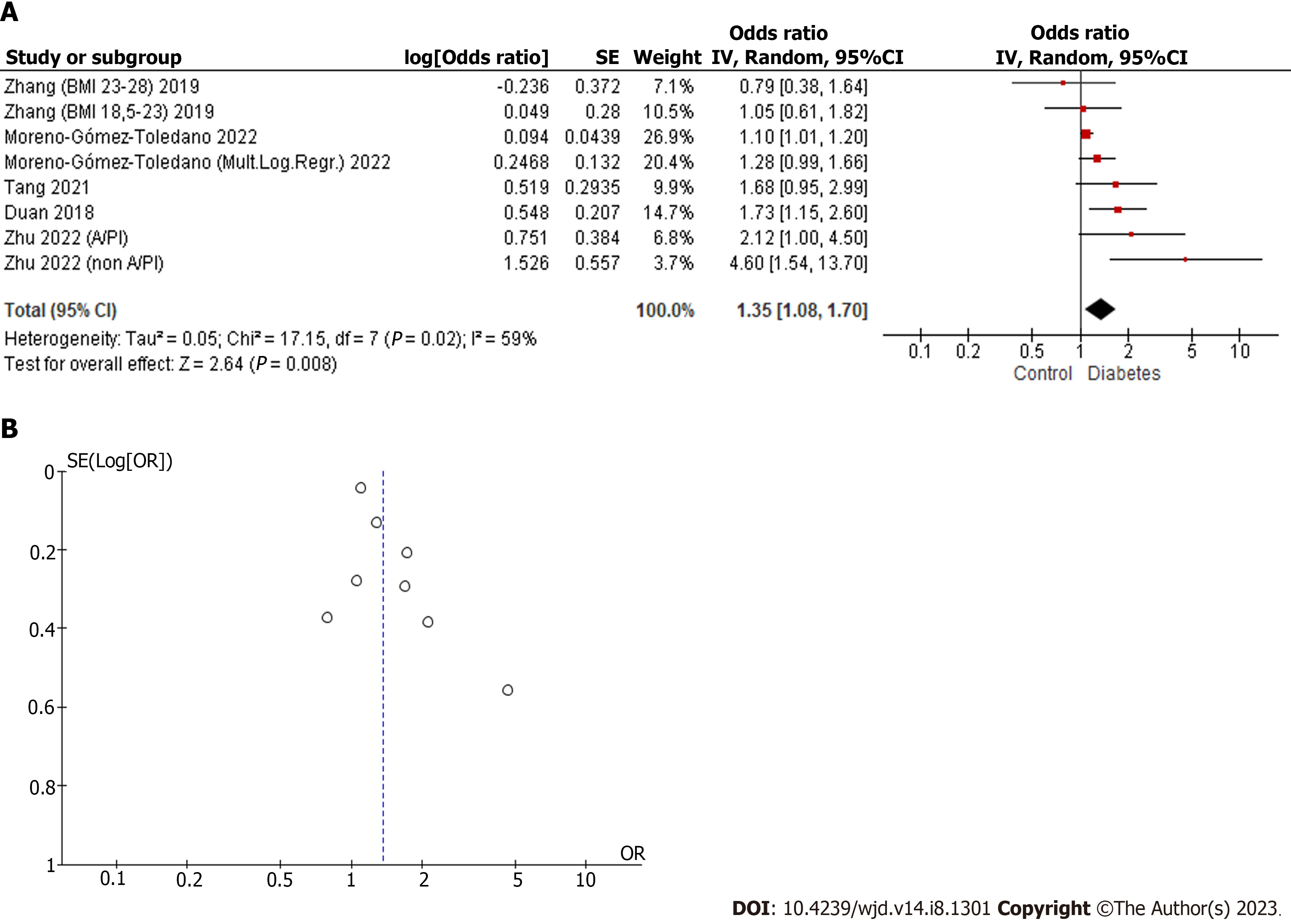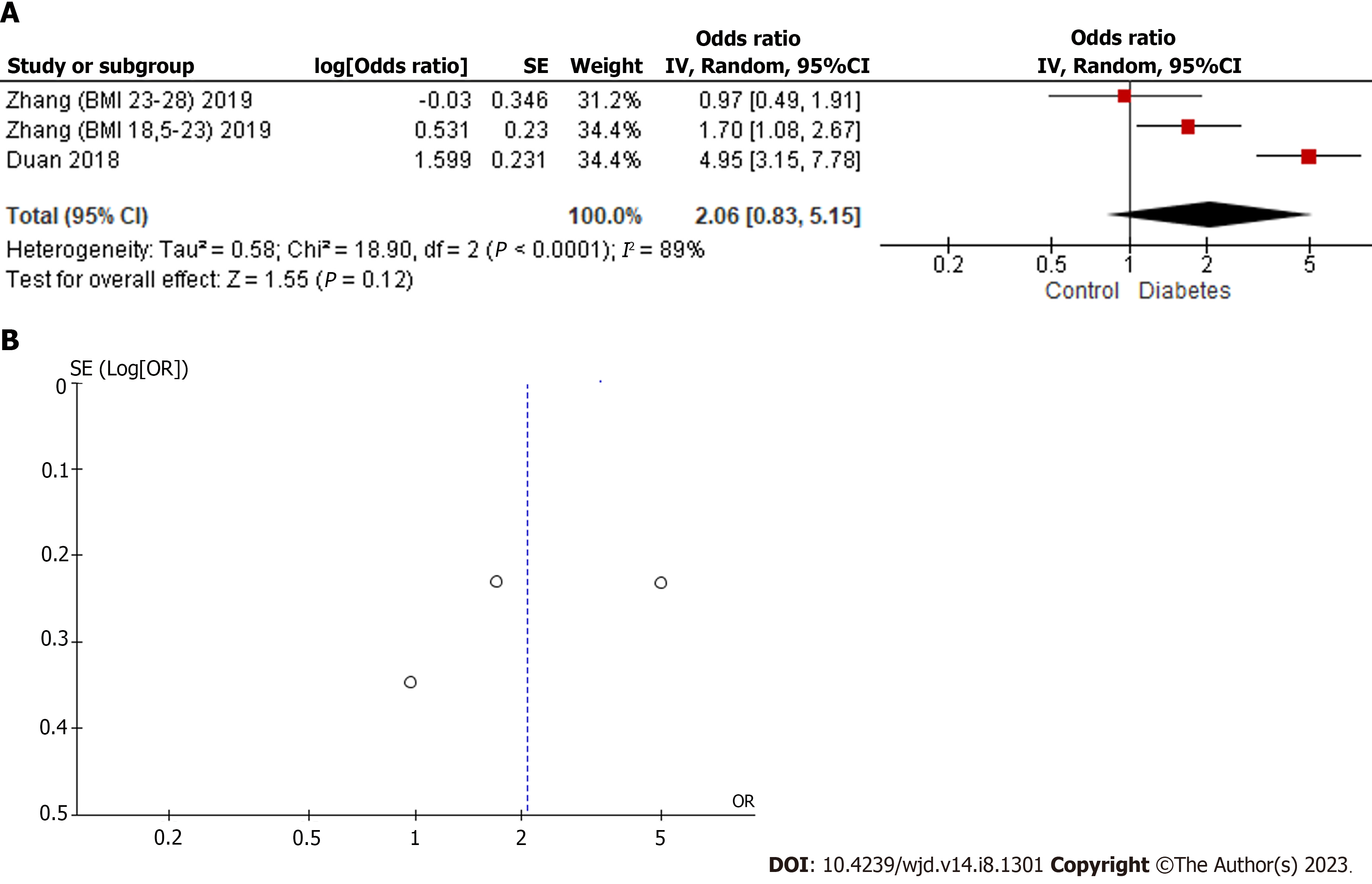Copyright
©The Author(s) 2023.
World J Diabetes. Aug 15, 2023; 14(8): 1301-1313
Published online Aug 15, 2023. doi: 10.4239/wjd.v14.i8.1301
Published online Aug 15, 2023. doi: 10.4239/wjd.v14.i8.1301
Figure 1 Schematic representation of the methodology used based on The PRISMA Statement.
BPA: Bisphenol A.
Figure 2 Meta-analysis.
A and B: Meta-analysis (inverse variance method) of the publications that studied bisphenol S and diabetes in humans (A), and funnel plot (for publication bias) (B). 95%CI: 95% confidence interval; BMI: Body mass index.
Figure 3 Meta-analysis.
A and B: Meta-analysis (inverse variance method) of the publications that studied bisphenol F and diabetes in humans (A), and funnel plot (for publication bias) (B). 95%CI: 95% confidence interval; BMI: Body mass index.
Figure 4 Meta-analysis.
A and B: Meta-analysis (inverse variance method) of the publications that studied bisphenol AF and diabetes in humans (A), and funnel plot (for publication bias) (B). 95%CI: 95% confidence interval; BMI: Body mass index.
- Citation: Moreno-Gómez-Toledano R, Delgado-Marín M, Cook-Calvete A, González-Cucharero C, Alcharani N, Jiménez-Guirado B, Hernandez I, Ramirez-Carracedo R, Tesoro L, Botana L, Sánchez-Esteban S, Diez-Mata J, Zamorano JL, Bosch RJ, Zaragoza C, Saura M. New environmental factors related to diabetes risk in humans: Emerging bisphenols used in synthesis of plastics. World J Diabetes 2023; 14(8): 1301-1313
- URL: https://www.wjgnet.com/1948-9358/full/v14/i8/1301.htm
- DOI: https://dx.doi.org/10.4239/wjd.v14.i8.1301












